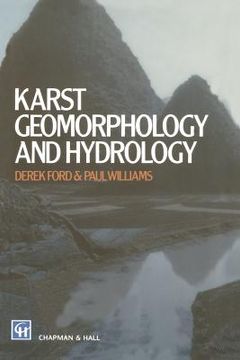Share
Karst Geomorphology and Hydrology
D. C. Ford
(Author)
·
P. W. Williams
(Author)
·
Springer
· Paperback
Karst Geomorphology and Hydrology - Ford, D. C. ; Williams, P. W.
Choose the list to add your product or create one New List
✓ Product added successfully to the Wishlist.
Go to My Wishlists
Origin: U.S.A.
(Import costs included in the price)
It will be shipped from our warehouse between
Wednesday, August 07 and
Monday, August 19.
You will receive it anywhere in United Kingdom between 1 and 3 business days after shipment.
Synopsis "Karst Geomorphology and Hydrology"
components dissolve. The alumino silicate minerals are the great example of the incongruent class, releasing Na+, K+, HCO-, etc. ions in reaction with J water but retaining most of their atoms in re-ordered solids such as kaolinite. The karst minerals are all congruent in normal conditions. Incongruent solution of dolomite and precipitation of calcite may occur in some exceptional conditions mentioned later. The sample of congruent minerals in Table 3. 1 contains all the common elements of crustal rocks except Fe, and furnishes a majority of the common dissolved inorganic species. The range of solubility is enormou . Gibbsite is an example that is insoluble to all intents and purposes; even in the most favourable circumstances encountered on the surface of this planet physical processes will disaggregate it and remove it as colloids or larger grains before there is significant solution damage. Rock salt (halite) is so soluble that it is rapidly destroyed in outcrop except in the driest places; it is principally important for its role in interstratal karstification. Sylvite and mirabilite are rarely encountered and never in great bulk. They occur as minor secondary cave minerals (see section 8. 4). Gypsum and anhydrite are quite common in outcrop. Karst features develop upon them rapidly because of their comparatively high solubility. Limestone and dolomite are common in outcrop. Their maximum solubility varies with environmental conditions but never approaches that of gypsum. Quartzite and siliceous sandstones are equally common in outcrop.
- 0% (0)
- 0% (0)
- 0% (0)
- 0% (0)
- 0% (0)
All books in our catalog are Original.
The book is written in English.
The binding of this edition is Paperback.
✓ Producto agregado correctamente al carro, Ir a Pagar.

